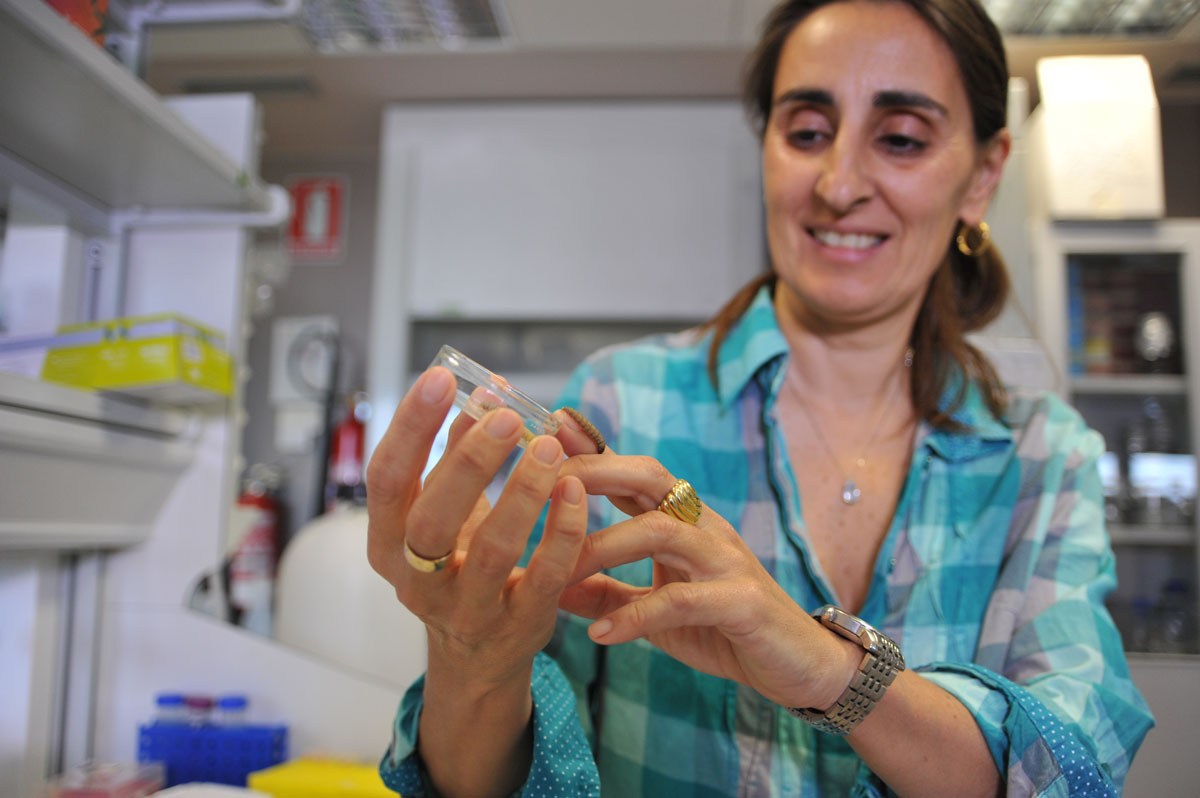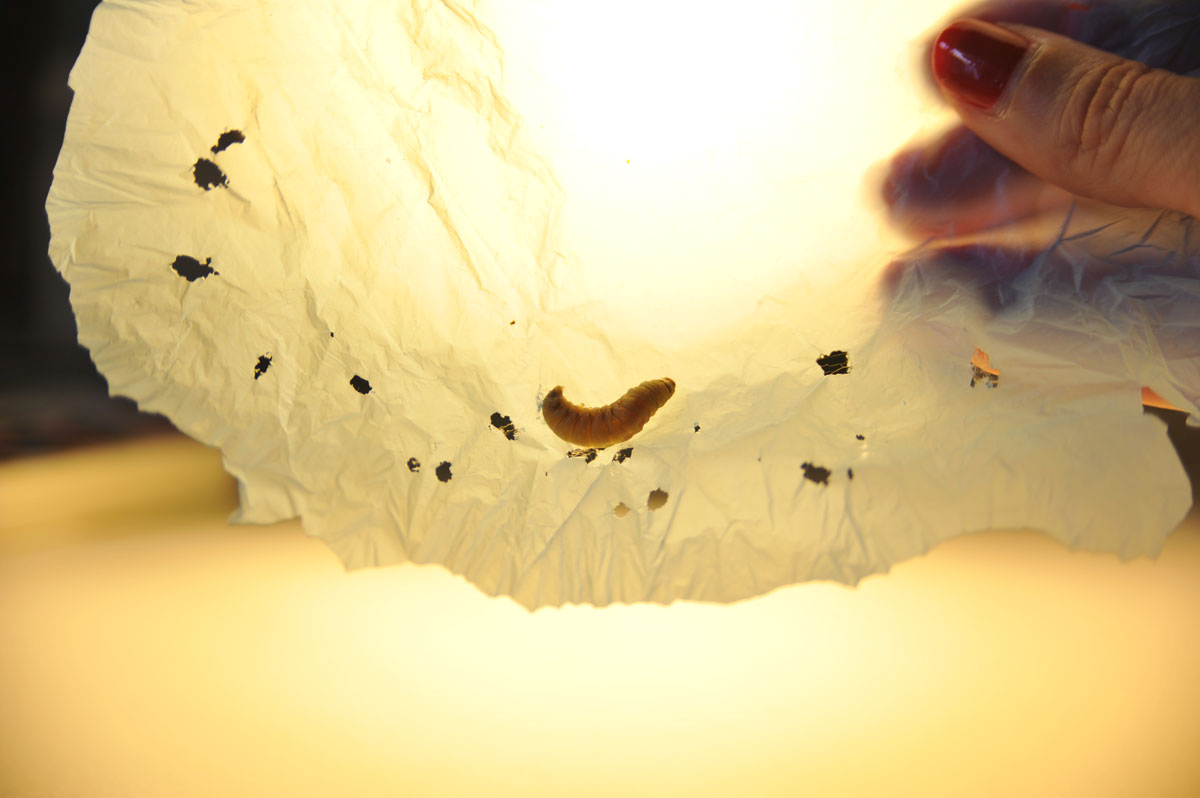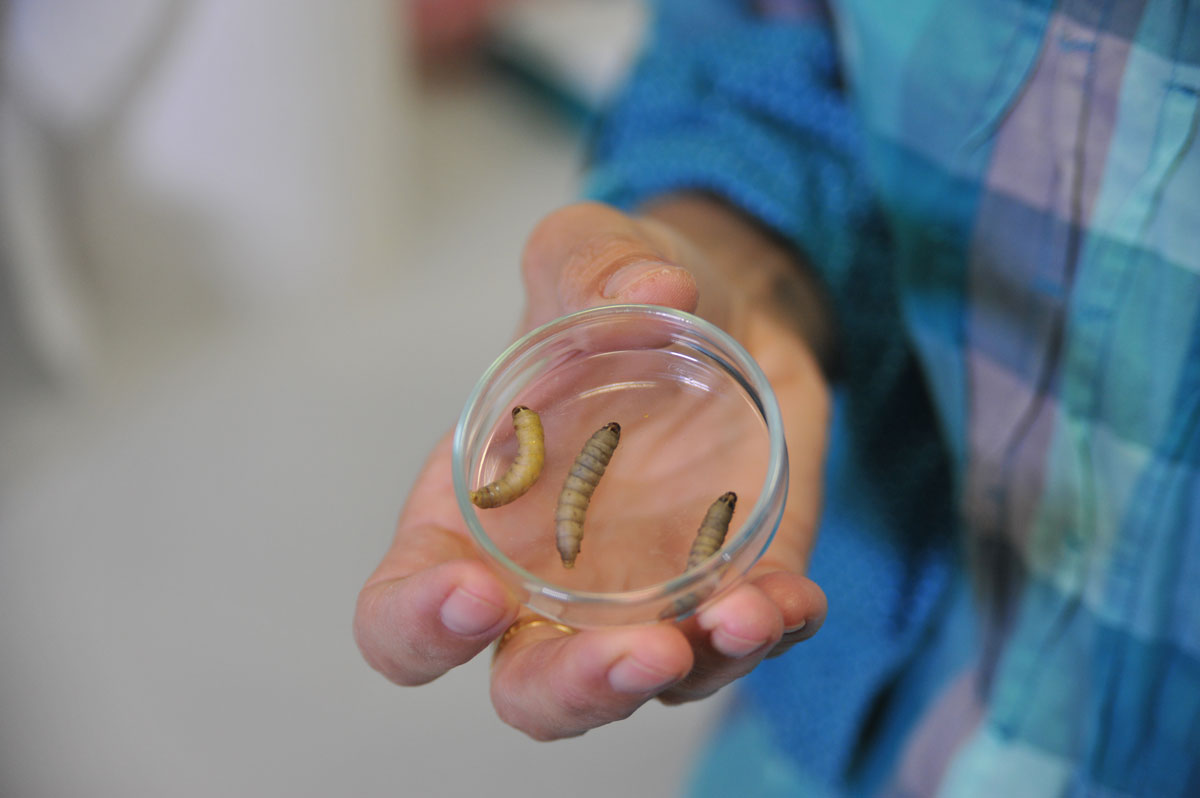Interview with Dr. Federica Bertocchini
In April 2017, the scientist Dr. Federica Bertocchini and her colleagues Paolo Bombelli and Christopher J. Howe published a discovery in the Spanish scientific journal Current Biology that attracted much public attention. By chance, Dr. Bertocchini discovered that the waxworm Galleria mellonella biologically degrades plastic (polyethylene). Polyethylene and polypropylene account for 92 percent of global plastic production – and are hardly biodegradable. We interviewed Dr. Bertocchini about her discovery, which represents a great hope in the fight against environmental pollution caused by plastic.

Some articles state you were in the middle of studying beeswax when you made your famous discovery. Would you describe how you discovered that the larvae of the wax moth eats plastic?
I did not examine beeswax. My main research area is the early developmental phase of vertebrates using chicken embryos. The discovery was accidental: I am a hobby beekeeper and keep my hives at home, of course free of bees. When I cleaned the honeycomb, I noticed that they were infested with waxworms. This did not seem unusual to me at first. They are a real plague for beekeepers. I put the worms in a plastic bag and after a while I realized that the bag was perforated, and the waxworms were everywhere in my apartment.
Do you think the media inflate your discovery to more than it actually is?
This discovery is part of a whole series of research into the degradation of plastic by natural means. For example, three years ago a Chinese American research group discovered and also published that another butterfly is able to break down polyethylene, although over a longer period of time. Last year, a Japanese group of researchers discovered two bacteria that are able to break down plastic. This opens up a series of research bases that can help us find answers in the future. Our research is part of this kind of research.
Theoretically, is the Galleria mellonella a solution to our pollution problem? How do you assess its potential?
We need to analyze the molecular components responsible for this effect. Once we have discovered this, we might be able to produce the hypothetical molecule in large quantities and biologically degrade plastic. However, we are currently in the first phase of observation. It will take some time from here to the supposed biotechnological application.

How many larvae would it theoretically take to permanently combat plastic pollution?
We don’t know that. The idea of using the larvae themselves is not an alternative for us: they are a nuisance to the environment, so you cannot simply throw millions of larvae into the fight against pollution – the natural balance must be respected.
How do the larvae digest the plastic? Do they excrete a form of plastic? How much plastic can one larvae eat per day and is it a food source or dangerous for it? Do you know of any other plastic which are biodegradable?
We don’t know all that yet. These are questions that still need to be investigated.
Have you previously researched the topics of plastic and environmental pollution through plastic?
No, I did not.
Will you do the research yourself or will your colleagues specialized in the field continue working on it?
I will work on it together with specialized colleagues.
What happens next?
The next step is to investigate the molecular mechanisms that were responsible for the biological degradation of plastic.
In your opinion, do the media sufficiently cover this topic?
Since a few years there is an increasing discussion about environmental pollution by plastic and environmental pollution in general. Considering the dramatic situation of our planet, one cannot talk enough about climate change and pollution. The media should talk more about it and motivate us to act.
Do you also give lectures? Do you collect financial support to progress in the field of research?
We are now in the very phase where we are looking for sponsors for our work.


